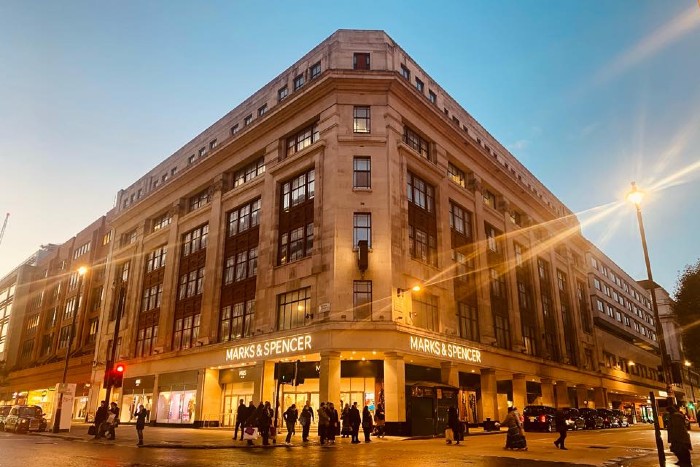While turnover-based rent in the retail industry is nothing new, recent events – namely the Covid-19 pandemic – have exacerbated rising trend of retailers turning to this kind of lease agreement.
Turnover rent is calculated by reference to the income and other receivables generated at the leased property – usually it’s an agreed percentage of turnover. Because turnover-based rents are closely aligned to individual stores’ performance, it arguably creates a symbiotic relationship between landlord and retail tenant. During a successful sales period, both parties benefit, but less favourable times can create an incentive to seek improvements.
Just like almost every other industry or sector, retail has fundamentally changed due to the pandemic. In particular, the share of business has become more equally split between physical and digital trading channels. Before Covid, it was mostly bricks-and-mortar.

In addition, the pre-pandemic retail property market was already facing pressure. Countless retailers were rolling out plans to reduce their estates and adapt to a digital environment.
Covid – and the forced store closures it prompted coupled with soaring numbers of people staying and/or working from home – has led to a forced shift to ecommerce as well as a change in the relationship between landlords and their retail tenants. One such change is the growing number of landlords offering tenants – on a case-by-case basis – the option to move to a turnover-based structure for the coming period.
Retail expert Nelson Blackley said turnover-based rents were the best solution for the future of UK retail.
“In the UK, several well-known retailers, such as New Look, AllSaints, and now Clarks have already begun to move many of their remaining stores to this more flexible model,” he said.
New Look launched a CVA in late August that entailed switching more than 400 of its UK stores to a turnover-based rent model. The retailer said at the time that this would provide it with “financial strength and flexibility to deliver a sustainable platform” for post-Covid trading.
More recently, The Crown Estate, which owns the whole of London’s Regent Street and around half of St James’s, offered some of its tenants the choice to switch to turnover based rents. It said the main purpose of this was to help tenants that were small and independent retailers and businesses.
In July last year, the property giant asked for nine per cent of turnover or a percentage of what it would normally receive in quarterly rents, on a scale starting at zero per cent for the current period and rising to 75 per cent by next month. Crown Estate central London director James Cooksey said a number of tenants were offered the option to move to more of a turnover-based structure “as part of the safe and sustainable reopening of the West End”.
Meanwhile, British footwear retailer Clarks was recently slammed by its landlords for its plans to switch to turnover-based and zero rental terms. In November, Clarks’ CVA were accused by landlords of abusing insolvency processes as it sought to switch the majority of its 320 UK stores to turnover-based rent.

Despite the challenges, Clarks was given the green light to push on with a rescue plan, when 90 per cent of its creditors – which include landlords – voted in favour of the CVA proposals.
This means all of Clarks’ 320 stores in the UK would remain open, but rent was to be slashed to zero on 60 of them. The rest of its shops would switch to a turnover-based model.
Most recently, menswear retailer Moss Bros launched a CVA that aimed to “restructure its fixed cost base” after trading was “severely impacted” by the pandemic. However, the retailer’s negotiations with landlords about switching its rental agreements to ones that are based on turnover had failed. The CVA opted for rent reductions instead, and in the end this was approved by 80 per cent of creditors.

A recent report by Savills found that at least 82 per cent of retailers in the UK were looking to rejig some existing leases to incorporate a turnover rent provision in the future. But 74 per cent of landlords saw current rent negotiations as being short-term solutions rather than a permanent fixture, suggesting that there are still a lot of conversations to be had on what might be the ideal outcome for both parties.
Switching to a turnover based lease is by no means a simple solution. But for retailers, it allows greater control over property costs in relation to sales, removes an upward-only rent review provision and preserves an economic operating model.
Joel Lawson, associate director of retail at commercial real estate advisor Avison Young, anticipated the turnover rent model to rise in popularity during the next economic cycle. He said it was a means of landlords and tenants taking a more equal share of risk, reflective of their symbiotic relationship.
“However, the model has its limitations,” he told Retail Gazette.
“The traditional lease model is seen as inflexible and new lease models are emerging”
“As online sales continue to grow, consumers are increasingly using physical shops as show rooms, before later ordering online.
“That sale is not captured by the physical store’s turnover figures and is treated as an internet sale but turnover leases can require the tenant to account for online sales that have an interaction with the physical retail store.
“For example, click-and-collect sales fulfilled in-store could be included in the definition of the tenant’s turnover at the premises.
“The traditional lease model is seen in some quarters as inflexible, and new lease models are emerging, which attempt to capture the value of a physical store in terms of bricks and mortar sales, facilitating click-and-collect orders and returns, as well as the marketing generated by the presence of a store, and how this can translate into internet sales.”
Lawson further argued that many retailers that have failed in recent months had neglected to adapt to structural change in the market.
“The same applies to landlords. Retailers are increasingly demanding flexibility, and a growing number of landlords are prepared to offer flexible lease models which recognise that they cater to start ups, pop ups and seasonal retailers, as well as established high street operators,” he said.
“The one size fits all approach is no longer fit for purpose.”
Turnover-based rents have arguably become a common tactic in the retail sector over the past few months. Although they may be seen as a last resort option, the pandemic has still effectively rewritten retail business rules.
Blackley said: “However, the longer-term threat that these pose to landlord’s income suggests that they are likely to remain an emergency measure for distressed businesses.”
He added that with occupancy levels falling, an increasing number of retailers resorting to CVAs and shrinking their portfolios, it means property owners have little room to compromise.
“It has been clear for some time that the relationship between landlords and retail tenant must move away from the traditional commercial relationship of quarterly rent payments and regular upward-only reviews,” Blackley explained.
Even before the pandemic, the turnover rent model was becoming increasingly prevalent in commercial leases – particularly with the likes of H&M, Next and Sports Direct.
However, such agreements typically included a substantial base rent. The retail sector is now increasingly seeing retailers seeking lease structures based purely on turnover.
This is largely driven by the number of CVAs in recent years, which has to an extent normalised pure turnover terms on the high street, where the traditional lease structure has prevailed.
The pandemic may have brought a lot of uncertainty for retail, but one thing is for sure: the rising occurrence of retailers entering landlord negotiations around turnover-rent is here to stay.
Click here to sign up to Retail Gazette’s free daily email newsletter


















